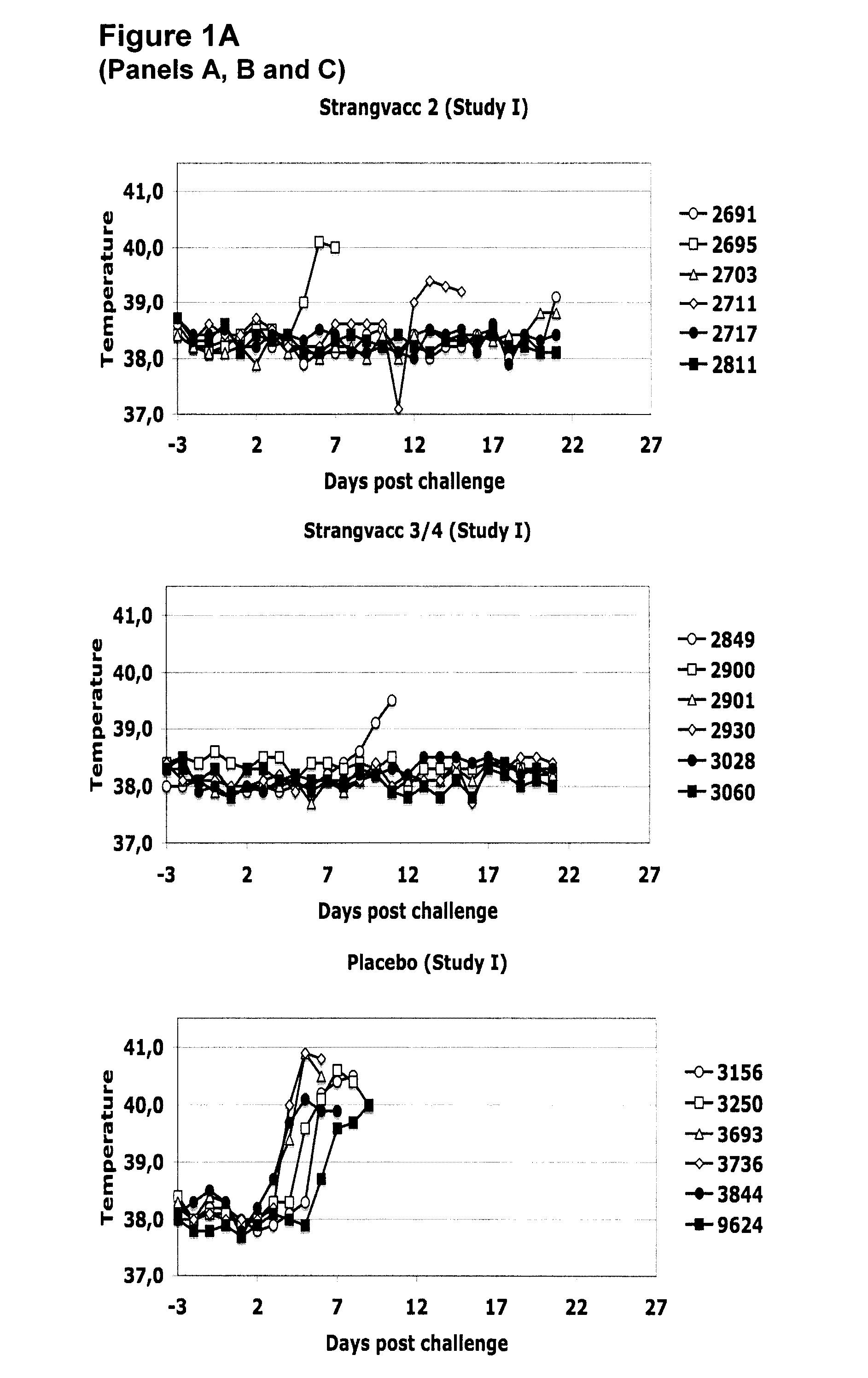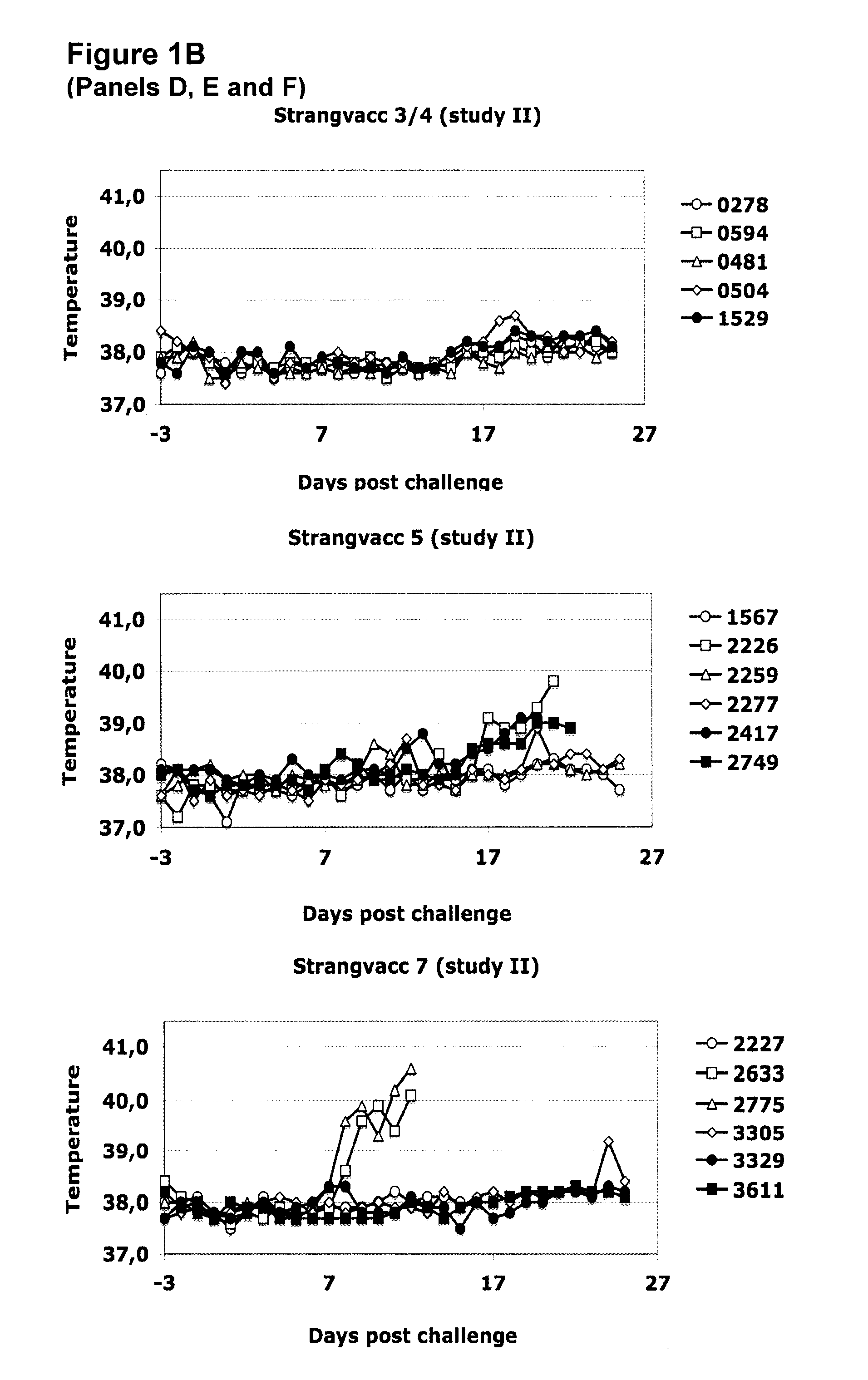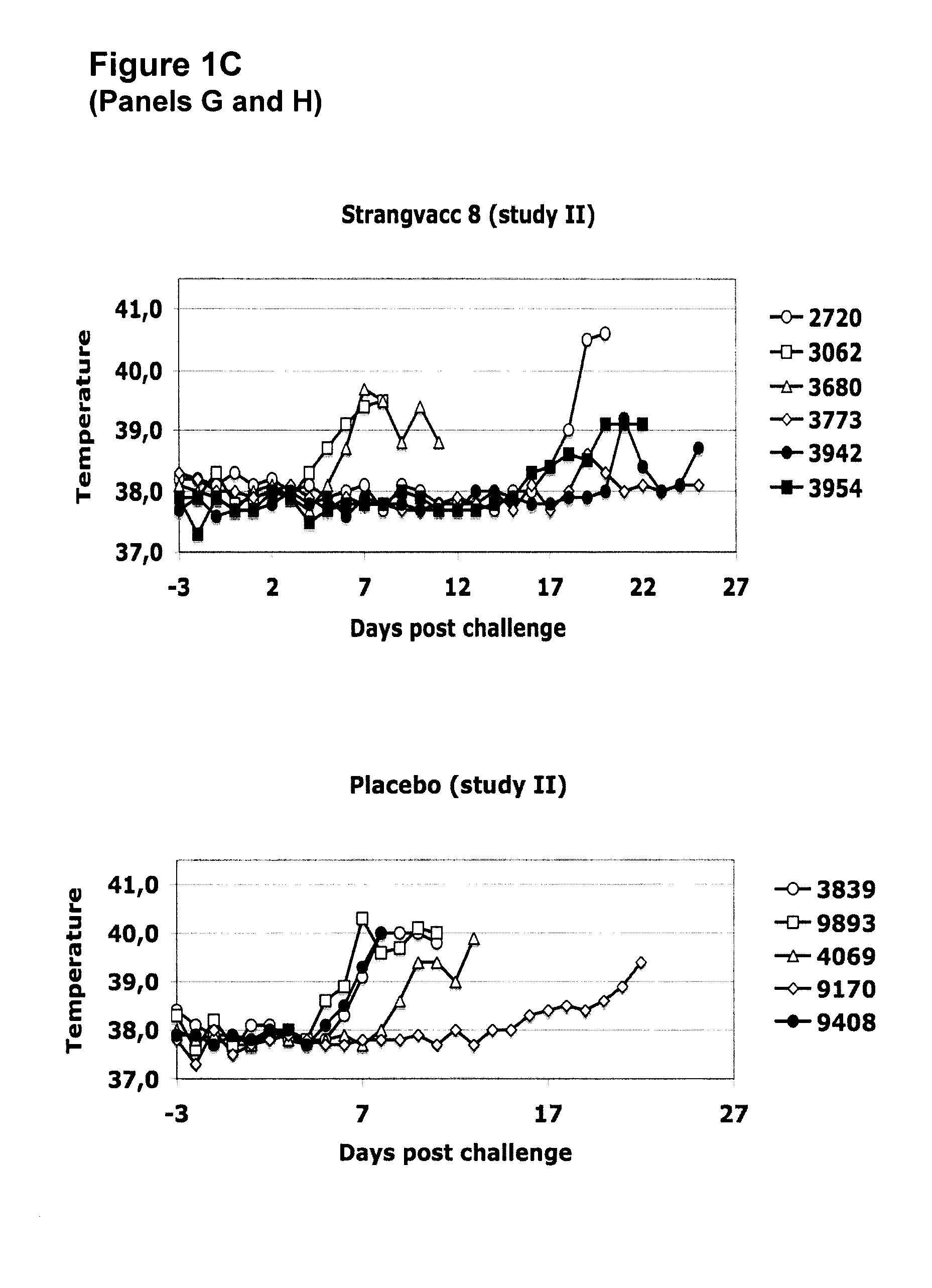Vaccine against streptococcal infections based on recombinant proteins
a technology of recombinant proteins and streptococcal infections, which is applied in the field of subunit immunogenic or vaccine compositions, can solve the problems of ineffectiveness of /i>as vaccine components, inability to efficiently and safely prepare vaccines, and inability to meet the needs of patients, so as to reduce clinical symptoms, reduce clinical disease, and reduce the effect of temperature ris
- Summary
- Abstract
- Description
- Claims
- Application Information
AI Technical Summary
Benefits of technology
Problems solved by technology
Method used
Image
Examples
example 1
PCR Amplifications and Constructions of E. coli Clones
[0101]S. equi subspecies equi strain 1866 (obtained from Nordvacc Läkemedel AB, Sweden), (WO 2004 / 032957 A1, Ref. 25) was used as source of DNA for cloning. Chromosomal DNA from subspecies equi strain 1866 was prepared and used as a template to amplify various gene fragments presented in the Examples 2-8 and 16 further below. The sequences of primers used to amplify the various gene fragments are listed in Tables 2, 4 and 5. Cleavage sites for the restriction enzymes were included in the primer sequences. The plasmid vector pGEX-6P-1 (GE Healthcare, Uppsala, Sweden) (alternatively the pTYB4 vector, New England Biolabs, was used) was used for cloning and expression. The PCR amplifications were performed using the primers (20 pmol / μl) and FideliTaq™ PCR Master Mix (USB Corporation, Cleveland, Ohio) using the following programme: Step 1, pre-heat 1 minute at 95° C., DNA strand separation; Step 2, 30 seconds at 95° C.; Step 3, anneal...
example 2
Construction of a Clone Expressing Fusion Protein Eq85
[0102]A gene fragment of eq8 was PCR amplified using primer pairs eq8Bam and eq8Nco. After amplification and purification the fragment was digested with BamHI and NcoI. Also a gene fragment of eq5 was PCR amplified using primer pairs 85Nco and eq5C2. After amplification and purification the fragment was digested with NcoI and XhoI. Both fragments were ligated into the BamHI and XhoI cleaved vector pGEX-6P-1.
SEQ ID NO:21.
[0103]Showing the nucleotide sequence of the gene fusion fragment encoding Eq85 inserted in the pGEX-6P-1vector. The BamHI and XhoI sites are indicated in bold and the vector sequences are underlined. Note that the nucleotide A in bold and italics is different in this position compared to the published sequence in http: / / www.sanger.ac.uk / Projects / S_equi / ;
TCTGTTCCAGGGGCCCCTGGGATCCGCGACTACCCTAGCAGGACAAACAGAAGTACGGGCTGATAATATCTTACGCTTAGATATGACAGATAAAGAAGCAGTTGAAAAATTCGCTAACGAGCTTAAAAATGAAGTCCATAAAAACTATCGTGGTAGTAATAC...
example 3
Construction of a Clone Expressing Fusion Protein CCE
[0105]This gene fusion construct is made of five different S. equi gene fragments (cne, eq21, eq36, eq42 and eag). First a gene fragment of cne was PCR amplified using primer pairs CneBam and CneSac. After amplification and purification the fragment was digested with BamHI and SacI. Second, a gene fragment of eag was PCR amplified using primer pairs EagSac and EagXho. After amplification and purification the fragment was digested with SacI and XhoI. The purified cne and eag fragments were ligated into the BamHI and XhoI cleaved vector pGEX-6P-1. After transformation into E. coli a correct clone was identified and denoted pCNEEAG. Thereafter, a gene fragment of eq21 was PCR amplified using primer pairs eqc9 and eqc10. After amplification and purification the fragment was digested with SacI and XbaI. The gene fragment of eq36 was PCR amplified using primer pairs eqc11 and eqc12. After amplification and purification the fragment was ...
PUM
 Login to View More
Login to View More Abstract
Description
Claims
Application Information
 Login to View More
Login to View More - R&D
- Intellectual Property
- Life Sciences
- Materials
- Tech Scout
- Unparalleled Data Quality
- Higher Quality Content
- 60% Fewer Hallucinations
Browse by: Latest US Patents, China's latest patents, Technical Efficacy Thesaurus, Application Domain, Technology Topic, Popular Technical Reports.
© 2025 PatSnap. All rights reserved.Legal|Privacy policy|Modern Slavery Act Transparency Statement|Sitemap|About US| Contact US: help@patsnap.com



